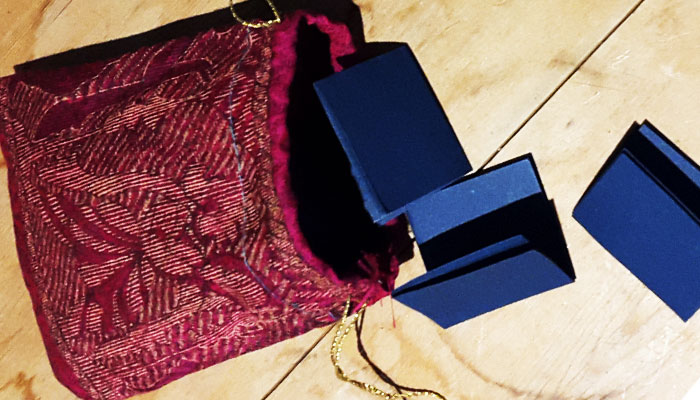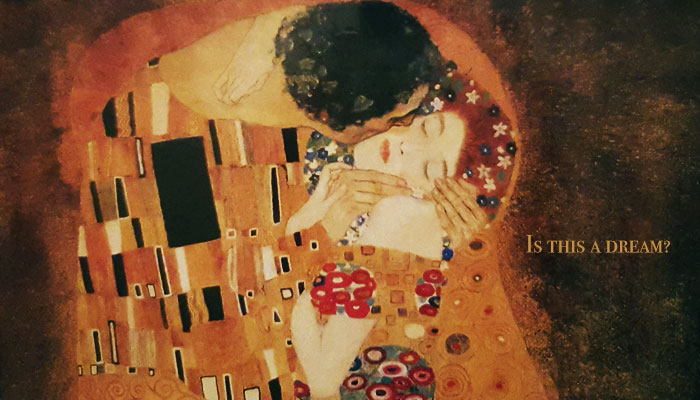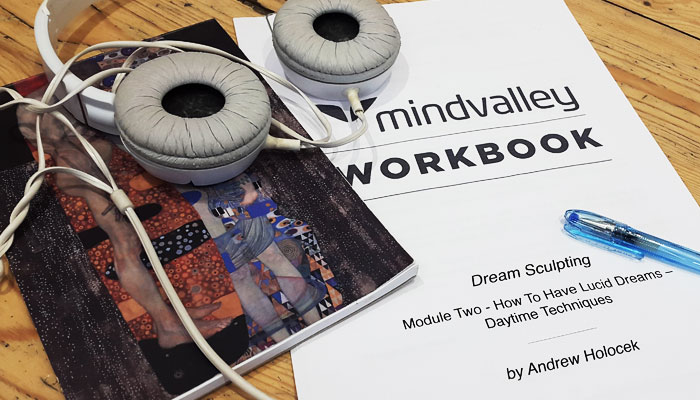Every human being on this planet sleeps and dreams. Have you ever wondered what’s going on when you sleep and dream? What are those shadowy states of consciousness we all share? Ones that we spend a third of our lives in? Are they mere rest that serves no other purpose than rejuvenating your physical body? What if there was more to the story? What if those were the greatest missed opportunities of humankind? — Andrew Holocek
Welcome to Dream Sculpting
Over the next six weeks, I’m going to be fully immersing myself in Andrew Holocek’s Dream Sculpting course (affiliate link), where I’ll be learning the art and science of lucid dreaming and dream yoga. I kindly received the course for free through the company MindValley and will be writing about my experiences on ThoughtBrick.
What is lucid dreaming?
Lucid dreaming is becoming conscious of the fact that you are dreaming or as Andrew puts it, ‘hacking into a previously secret state of consciousness’.
There are degrees of lucidity, but the main difference between a regular dream and a lucid one is that when you’re lucid, you’re in control, and the dreamscape will often appear hyper real.
Where did lucid dreaming come from?
Although lucid dreaming has been a core part of many eastern practices for centuries, and was explored by Carl Jung and Aristotle, the term lucid dreaming was invented by Dutch Psychiatrist Frederik Van Eeden at the turn of the last century. However, it wasn’t until 1975 that lucid dreaming was verified by science, thanks to the work of Stephen LaBerge.
Why I want to learn lucid dreaming?
You start to wake up to your life. That’s no small thing. — Andrew Holocek
The reason I’m so into lucid dreaming is because I’ve done it before about five years ago — but only twice, and it was such an incredible experience. The only problem was that I wasn’t able to do it again.
Apart from being fun, you can use lucid dreaming to help you solve problems, ask your higher self questions you don’t have answers to, practise a sport or instrument you love doing, overcome fears, become more creative…the opportunities are unlimited.
You can experience what it’s like to fly, time travel, or move through solid objects, and it feels as real, if not more real than your waking existence. When you start to lucid dream, it’ll open you up to a completely new way of viewing the world and help you to realise that there’s so much more to ourselves and the world than we previously thought.
Initial lucid dream sculpting exercises
I’ve just started the course, but I’m already seeing progress and am able to remember at least two of my dreams clearly every night. Previously, I wasn’t able to do this, but there are specific techniques you’re taught which help a lot with dream recall.
Mindfulness meditation for lucidity
Module one of Dream Sculpting emphasises the importance of meditation and introduces you to a beautiful three part mindfulness meditation that you do in your own time for just 10 minutes each day.
The idea here is that people who meditate regularly, are more likely to experience lucid dreams. In this respect, Dream Sculpting is also about increasing levels of awareness in all parts of your life — waking and sleep.
Module two, which is what I’ve just started, introduces you to a variety of powerful lucid dreaming daytime techniques — most of which I hadn’t come across before.
Prospective memory
I’m not going to list all the exercises here, but some of them include, exercising prospective memory which is about remembering to do something in the future and is a really good tool to help induce lucidity. Getting a bit creative with it, I decided to write down seven potential triggers on folded bits of card.
At the start of each day, I will then pick one out. Example triggers are ‘when I see a cat’ or when I receive a text message’. When the trigger occurs, I will then ask, ‘Is this a dream?’ This is essentially the essence of exercising prospective memory.

On each folded bit of card, there is a trigger written such as ‘when I see a cat’ or ‘when I receive a text message’. Each day I will pick a new trigger out of the bag and when I experience the trigger in reality, I will ask, ‘Is this a dream?’ This is, essentially helping me to exercise my prospective memory.
What were you thinking about for the last two minutes?
I will also be practising reflective thinking which I like a lot. Throughout the day, I’ll be stopping to ask myself ‘what was I just thinking two minutes ago?’
I think this is a pretty good exercise in itself, because it stops you from getting into negative thought cycles and helps you to see which thoughts are more predominant in your mind. Thoughts after all are a bit like mantras and affirmations when you repeat them enough times.
In addition to this, I’ll be keeping daily dream and thought journals (I have a Gustav Klimt notebook which I thought was pretty apt), and of course state/ reality checks. One of my state checks is jumping.
The idea here is that if I repeat my state check enough in waking life, I will jump in one of my dreams — only when you jump in a dream, you often float or end up flying — at which point you’re a lot more likely to become lucid.
The power of intention
The most important thing I’ll be doing, however, is feeling excited and emotionally charged — immersing myself fully in the course over the next few months. I can do all the exercises in a methodical manner, but without intention, passion and the power of belief, I have nothing.
The power of intention was really emphasised right at the start of module two and I was asked to write down why I want to have lucid dreams and what I want to feel. This will be personal to everyone, but it’s the key element.
I know this is only the start, but I feel incredibly lucky and grateful to have been given this opportunity, and can’t wait to see how this new dreaming adventure will unfold.
There’s a whole universe you’ve been sitting on and we’re going to bring that universe into your conscious awareness. — Andrew Holocek
Take part in a 2019 Dream Sculpting masterclass below
You can find out more about Andrew Holocek’s lucid Dream Sculpting here (affiliate link)
or read about my experience in week 3 of dream sculpting in the following article:
My first lucid dream: Andrew Holocek shows me how to unlock my brain


